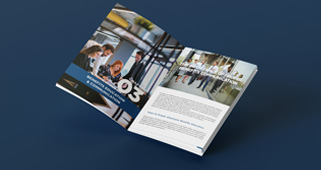It’s no secret that fantastic benefits are a crucial part of a strong compensation package. With the unemployment rate sinking month over month, employees can be choosey if their needs (and wants) aren’t being totally met – and it shows. In fact, according to the United States’ Bureau of Labor Statistics, 70 percent of positions taken by employees aged 18 to 24 ended in less than a year, and 93 percent ended in fewer than five. For employees aged 35 to 44, the numbers are not much better: 36 percent of jobs ended in less than a year while 75 percent ended in fewer than five.
It stands to reason that whether your human resources department is focused on recruitment, retention, or both, we can all use a fresh perspective on what the most valued benefits are for workers right now. Read on for a guide to the most in-demand benefits in 2022 from the employee benefits experts at Benely.
Remote Work Options
So much has changed in the past two years, and it’s likely that work at your organization looks very different. The way companies respond to these changes, along with the benefits they offer, sends a strong message to employees about company culture. According to FlexJobs’ Annual Survey conducted between July and August 2021, 58 percent of respondents report that they would prefer to work remotely full-time even post-pandemic, while 39 percent prefer a hybrid work environment. Combined, that’s a shockingly high 97 percent of workers who report a preference for remote work in some form.
If your company is any position to offer remote work, you should strongly consider allowing this option for employees who are capable of getting all or part of their work done from home. Worried that efficiency might slip? No need: a recent study shows that 94 percent of businesses surveyed felt their employees who worked from home were as productive or more productive than the employees who worked in-person at the office. FlexJobs’ Annual Survey actually reports a different concern to be true: that 24 percent of employees report remote work as an option is so important to them, they’d be willing to take a 10 to twenty percent pay cut just to have it.
Last, but certainly not least: allowing remote work could save your company money. According to a study by Global Workplace Analytics on the topic, many corporations have seen windfalls from offering this benefit. They report that about six out of ten employers reported cost savings as a significant benefit to telecommuting, including IBM, which cut real estate costs by $50 million, and Nortel, who estimates they save $100,000 per employee that doesn’t have to relocate.
Flexible Hours
The traditional Monday through Friday, 9 to 5 standard may be a thing of the past. The flexible hours’ arrangement, or “agile working,” as it’s being called, is a hot commodity, with 92 percent of millennials reporting it as one of their top priorities. Offering flexible hours can give smaller companies an edge over larger companies that are able to offer higher salaries, and maybe more comprehensive medical plans, too. In fact, 30 percent of employees report preferring flexible hours to a pay raise. And it’s great for retention, too: if your employees have a flexible work schedule that allows them to meet the other demands of their life with ease, they’ll be a lot less likely to want to give their job up.
Work-life balance is more than a buzz word – (buzz phrase?) – it’s a tangible result produced through a flexible schedule. LinkedIn reports that flexibility in the workplace delivers a significant impact on a healthy work-life balance for many reasons: 73 percent of employees surveyed said flexible work arrangements increased their work satisfaction, and 78 percent said it made them feel more productive. And as Brenda Barnes, CEO at Sara Lee, shared with SHRM, “[Workplace flexibility] has a lot to do with productivity. The more flexible we make the work environment, the more we can provide workers with what they need to manage their lives and their jobs. We end up with higher productivity. It is great for the economy and the companies.”
Childcare and Family Benefits
With children attending school remotely from home, a major shift occurred for working parents during the pandemic. A survey conducted in August of 2020 by Care@Work of 1,000 working parents with children under the age of 15 showed 73 percent of parents were considering making major changes at work, including 44 percent wanting to amend their schedules, 21 percent seeking a new job, and 15 percent looking to leave the workforce altogether.
A recent survey of 3,055 working parents conducted by Boston Consulting Group reports that the time spent on child care and housekeeping tasks has almost doubled during the pandemic, rising an average of an additional 27 hours per week, and women report carrying the burden. Offering a child care subsidy could be an excellent way to retain your best workers and attract those who have grown frustrated with their current employer.
If you decide to offer a child care subsidy and complete Form 8882, you may be able to take advantage of a unique annual tax credit of up to $150,000. On page 2 of the Standard Form 8882, the IRS writes, “the credit is 25 percent of the qualified child-care facility expenditures, plus 10 percent of the qualified child-care resource and referral expenditures paid or incurred during the tax year.”
Find Better Benefits with Benely
At Benely, we offer a one-stop solution for employee benefits, and we’re always staying on top of what your employees want and need right now. Contact Benely to request a free demo and learn more about streamlining your benefits process.






